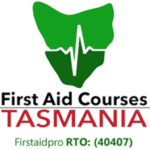Understanding different types of asthma helps get better treatment, resulting in overall improvement of the condition and quality of life.
Anyone struggling with asthma symptoms should see a doctor to get a proper diagnosis and identify any underlying causes. Learning first aid is also important to prevent complications from this chronic disease.
What Is Asthma?
Asthma is a common disease in children and adults that affect the lungs and breathing. It is a chronic condition, meaning it does not go away and will require ongoing medical management.
The difficulties of the condition are caused by the narrowing and swelling of the airways. In some cases, it can even lead to mucus production within the airways, causing shortness of breath and frequent coughing.
There are currently 2.7% million Australians (11% of the overall population) who have asthma, based on the 2017-18 report from the Australian Bureau of Statistics.
It can be mild, with little to no medical treatment needed. However, it can be severe in some cases, depending on the type and severity of symptoms.
The doctor will usually conduct a series of tests to diagnose this condition properly. Some may occasionally experience symptoms in response to specific triggers, while others may occur more often.
Beyond the severity, there are also different types of asthma with differing symptoms and triggers. Some can lead to discomfort and other signs, even though asthma is considered a single condition.
Knowing what type you have, along with the triggers, is important in getting the right treatment for your condition.
Types of Asthma
Allergic Asthma
The most common type of breathing condition affects more than 50% of people with Asthma in Australia. Upon exposure to an allergen, the person’s airways will tighten, resulting in chest tightness and breathing difficulties.
Common allergens in the environment can trigger allergic asthma, including pollen, allergy dander, mould, certain food choices, dust mites, insect and bee stings, and irritants in the air.
Nonallergic Asthma
Nonallergic (non-atopic) asthma is not related to an allergen to trigger an attack. It is more likely to appear later in life and affects more females than males.
The causes are not well understood, but health experts believe that the condition is due to genetic and environmental factors.
Seasonal Asthma
Seasonal asthma symptoms may flare up under certain conditions or at a particular time of the year.
A person with this condition may notice symptoms during hay fever season (pollen season), spring, winter, and days when air pollution is worse.
Exercise-Induced Bronchoconstriction
Exercise-induced asthma occurs during or immediately after engaging in physical exercise or another form of strenuous activity. The symptoms can flare up around five to twenty minutes after the activity.
Although it is normal to experience shortness of breath after an exercise, this type of asthma may also result in mild to severe wheezing, coughing, and chest pain.
Occupational Asthma
Certain jobs can expose workers to substances that can lead to occupational asthma (OA). OA accounts for about 3,000 new cases every year in Australia alone.
Hundreds of substances can cause or trigger the symptoms, especially those you are in regular contact with.
Other types of asthma include:
- Intermittent
- Persistent
- Adult-onset
- Pediatric
- Asthma-COPD overlap syndrome (ACOS)
Current research has not yet identified why some people have this chronic disease while others do not. However, certain factors can contribute to higher risk, such as allergies, environmental factors, genetics, and respiratory infections.
First Aid For Asthma
It is important for healthcare professionals and even bystanders to know the basic four steps of asthma first aid.
Sit The Person In An Upright Position
Be calm and reassuring while placing the person in an upright, comfortable position. Never leave them alone and monitor any changes in breathing and consciousness.
Give Puffs
Shake the puffer and provide four separate puffs of blue or grey reliever. Put one puff into the spacer and get the person to take breaths from the device.
Repeat until four puffs have been taken. With no access to the spacer, give the person puffs directly onto the mouth.
Wait Four Minutes
If there is no improvement in the symptoms, give four more separate puffs of blue or grey reliever.
Call Emergency Services
Call triple zero (000) for emergency assistance if the breathing does not return to normal, or other symptoms have occurred.
Conclusion
Knowing and understanding different types of asthma is important in managing its symptoms.
People living with this condition should have an asthma action plan containing the lists of steps needed to take in case of an attack.
Even mild asthma has the possibility of increasing its severity. It is why following the treatment plan is important, along with learning first aid treatment.
Learn first aid for someone who is having an asthma attack.
Contact us for more information.








